May 25, 2023
NUYTS WILDERNESS WALK/THOMPSON COVE
Finally, exactly two months after my birthday, we had the time, headspace and energy to go do the Nuyts Wilderness Walk that was my birthday hike choice for this year. We had done a gorgeous reconnaissance hike in preparation for it a couple of months back, and it was good to at last have a day set aside in good weather for this long and special wilderness trail.
We began near the Deep River bridge and set out for Thompson Cove.
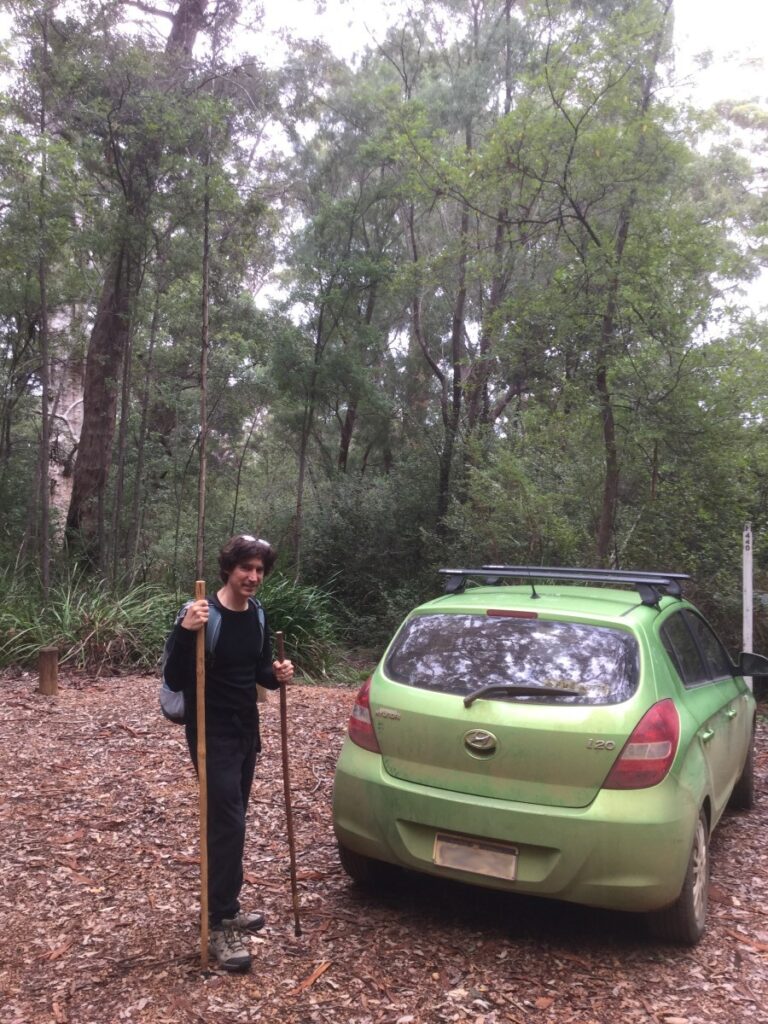
Did I mention the old-growth Karri/Tingle forest is awe-inspiring? There is so little of it left – I wish I could travel back in time 250 years to see this place before it was colonised by a destructive industrial culture which has chewed its way through most of the coastal ecosystems since arriving – and to put an invisible shield around Australia to stop Europeans from ever finding this continent. Imagine Australia if it had remained in the hands of its Indigenous people, who lived here for 60,000 years without utterly destroying the place.
Track maps and information on local hikes were posted near the bridge.
Today we were heading for Thompson Cove, but we are keen to do this gorgeous walk all over again to check out alternative destination Aldridge Cove.
On our reconnaissance walk into the Nuyts we had gone from John Rate Lookout via Mt Clare to this bridge – which is so wobbly we crossed it one at a time so we’d not fall over!
Nice views of the Deep River in either direction – this is one of the few rivers in South-Western Australia which still has intact riparian vegetation and relatively clean water. Most of the others, including the Swan and Canning Rivers in the state capital, are polluted sewers with denuded and eroded banks. When we walk in conservation areas like this, we get a glimpse of the world as it was before Homo colossus began to systematically destroy it.
You may notice the water is brownish. This is caused by natural tannins in the riparian vegetation. Imagine it as a kind of cold-brewed tea. There are many rivers and inlets on the South Coast which naturally contain tannins from the surrounding native vegetation. In Scotland this happens in peat bogs; people traditionally tanned leather there. Here’s Tom Langhorne explaining how that is done, without causing the kind of environmental damage and waste associated with industrial tanning. By the way, many hides these days are going into landfill because of vegan objections to leather, and the low cost of synthetic and non-biodegradable substitutes – which is so utterly wasteful, earth-polluting and nonsensical.
The first walk section immediately after the bridge took us through Karri forest. Here’s some of the beauty all around in that place. This vibrant banksia flower below was one of a cluster on the ground. Local cockatoos often nip off flowers and fruits this way – but only some of them.
Walking, you will often go through stands of Casuarinas in the forest, which create a little world of their own. The path we were on was wonderfully soft and springy; the sort that you would walk on for hours just for the joy of it. The aromas in the air were a lovely mix of freshness, recent rain, earth, aromatic oils from the various myrtaceous species, fungi, and the decomposition of plant materials in the humus layer. Get down on the ground sometime after rain in a natural forest, lift some of the leaves off the ground until you get to where the fungal mycelia are, and take some deep breaths. One of the best smells on the planet.♥
And this is not the same in a tree plantation – yet many modern people would not be able to distinguish between a natural forest, a logged forest and a plantation. Of course, there are few remnant forest ecosystems left, so most contemporary Westerners have never walked in one; we’re lucky on the South Coast of Western Australia that there are still patches of it around. Those places are incomparable and took many thousands of years to become what they are. One of the reasons I write these hiking photoessays is to show people who haven’t had the opportunity to experience for themselves what Australian remnant ecosystems look like up close.
And here’s one of Jess and me.
I always find it astonishing to look at the impoverished parklands people create around cities that they apparently find aesthetically appealing. I hike in what nature has made; it’s absolutely no comparison. This forest is a wonderland filled with life and its life-sustaining processes. It is species-rich, complex and interconnected to such an astounding degree. If anyone hasn’t read Merlin Sheldrake’s Entangled Life yet, let me highly recommend it.
We took lots of photos of mosses, lichens, fungi. This is nature recycling, and making a great deal of beauty and life doing so. Our culture talks about recycling and it’s mostly a myth – in nature it’s a law.
Below you can see the construction of an ant-lion, who creates a funnel to trap prey insects to feed on. In nature, the population excesses of each species become food for another species so that no species assumes plague proportions, and diversity can flourish. It is important for Westerners to have a good look at their attitudes to mortality, which is not the tragedy it is made out to be by people who are more invested in fear and ego survival than they are awed by the circle of birth-life-death-life in nature, going around like a gift and creating the most astonishing and beautiful world in which we get a brief turn on the stage which we should honour, and learn our kinship in.
Most people who haven’t grown up near places like this see predator-prey as “nature red in tooth and claw” – well, who’s projecting but Homo colossus, the most destructive species of them all, harbouring many pathological individuals who kill for kicks or greed, not for basic sustenance – a culture that has destroyed much of the biosphere itself, instead of taking basic sustenance from other species’ reproductive excess and yielding themselves in turn at the end.
Woodland and heathland alternated with patches of forest as we progressed towards the coast.
It’s fungal fruiting season since the autumn rains finally saturated the earth, and it’s spectacular. We took lots of photos and we know Sara will enjoy those.♥ Fungi are amazing creatures. I would really like people to understand that all life forms are alive and precious – not just humans and the animals we find cute. Also, that all life is sentient, not just things with a nervous system like our own.
Also that the species is more important than the individual. In nature, individuals feed on other individuals in the food web, but they do not exterminate entire species – something our completely insane ecocidal culture does routinely, and currently at the rate of ~200 species every day. I can’t tell you how obscene that is; and the utter irony that so much destruction is being carried out as we speak by making so-called “green” technologies.
Also news flash: “Green” vegan soy (which is grown in destructive monocultures and shipped from far away) isn’t a lesser environmental problem than people eating the grass-fed herbivores on their own locality’s existing pastures. People should eat as locally as possible and avoid as much as possible all forms of intensive animal or plant production. I’m having a relatively easy time avoiding feedlotted animal products as a smallholder, eating the beef off our own grass, pastured eggs and dairy grown by other local smallholders, and accessing organically grown F&V from my own garden. I am having a very hard time coming off the intensively farmed plant products that form the backbone of calorie intake for most of us: The cereals, the legumes, mostly grown as monocrops with high fertiliser, herbicide, pesticide and fossil fuel inputs in devastated countryside far from where I live. The flour for my bread, the lentils for my soup. No wonder Irish peasants ate a lot of potatoes, and that I am always trying to grow more of them. It’s the most calorie-dense plant food I can grow, but it’s not an easy crop. I need to collect a lot of animal manure to grow it.
The central problem is how far we have drifted from being a part of the food web. Ideally you’d be hunter-gathering, but most of the world’s natural ecosystems have been devastated by our industrial culture, and most of us have neither the constitution nor the skills required for that kind of life. We are moored in our own modernity, with the wreckage all around us. The best I can do is to try to grow my own food and eat as locally as possible. My husband and I consider native ecosystems sacrosanct and live where we do to steward for conservation 50 hectares of native sclerophyll woodlands and heathlands that came with 10 hectares of pasture on which we run a smallholding according to organic and permaculture principles. We’re planting shelter belts and wildlife habitat into the pasture, battling invasive species (like local pasture mainstay kikuyu, an African runner grass) with glyphosate to be able to do this (the lowest-impact herbicide for conservation work – please read the downloadable pdf in this link if you want to understand the context), don’t have tractors or any other fossil fuel driven farm machinery and are feeding ourselves and others while fine-tuning our practices.
In an ideal world we’d all be working on getting back to entirely local low-external-input food-growing systems that allow wildlife back into devastated areas, while drastically reducing our family sizes to counteract the at least tenfold overshoot of our species – but that’s another topic. When we are hiking in natural ecosystems like this, I can’t help but be aware that human beings lived in and off these original Australian ecosystems for 60,000 years without bulldozing or ploughing or polluting or concreting over anything, and without taking more than they needed. They also took active steps to limit the offspring they produced and lived in a harmony with their environment that our own massively destructive and ever-expanding coloniser culture can only dream about.
Do you notice how the leaf margins of the tree seedling above have been gnawed? This is normal life in a food web. Were this an ornamental in a park or garden, many Homo colossus would reach for a bottle of pesticide and exterminate insects, who are “bad” for causing such “damage” (we’ll skip the massive irony over who is saying that). But in a natural system, a degree of herbivory on the leaves of plants is as normal and necessary as a degree of predation on animals, for reasons discussed earlier. There is inbuilt resilience to such losses, and if you plant some eucalypts away from their natural ranges, they may break entire branches from excess weight because their foliage isn’t being appropriately pruned by the herbivores that feed on them.
Below we have a photo of a Macrozamia palm. Local Noongar people collected their large seeds to eat. Like many of their traditional plant foods, these seeds required soaking to leach out toxic chemicals. The local Indigenous diet was quite high in animal foods and comparatively low in plant foods. Australia is one of the most difficult places to survive hunter-gathering. Local marsupial mammals have an about two degree Celsius lower body temperature than the average placental mammal, to conserve energy on the available resources. The kangaroo has one of the most energy-efficient locomotion methods on the planet. Koalas, surviving off difficult to digest eucalyptus leaves, are super-slow, like sloths.
To survive in the Australian bush, humans have to be prepared to eat whatever is available: The plant seeds, tubers and greens they can find and detoxify if necessary, larger animal species like kangaroo and emu, the small mammals like bettongs and possums which have gone into rapid decline since the arrival of the Europeans, birds, eggs, fish, shellfish, lizards, turtles, frogs, and insects like the Witchetty grub, which an elder from a different Australian region to ours shows us the ins and outs of in the clip below.
I love the attitude of the Indigenous people in this clip to eating the grub. It’s just food. If you see a white Australian demonstrate how to eat a Witchetty grub, there is usually a lot of chest-beating and machismo to go with the meal. The kids I taught in high school often wrinkled their noses at the idea of eating a grub, but as I pointed out to them, most of us love and regularly eat evaporated condensed bee vomit (honey). It’s just that we don’t call it that.
We also eat matured plant ovaries (fruit), ground-up plant embryos and their endosperm (flour), whole plant embryos (in almonds, peanuts etc), and mussels which are during the breeding season largely ovary and/or testicle, and all their other innards. Then there’s eggs; I’m sure I don’t have to explain where those come from. And cheese, well, that is a product made from the secretions of a modified sebaceous gland, fermented by microbes and containing their excrements. And it’s delicious.
To which the middle school age range often said, “OK, Miss, I’m never going to eat anything else again!” But of course they did; the point is, it’s just that much of what we do is not considered, it’s unthinking autopilot. Especially if you’re buying processed food or even packaged meat, you can be totally divorced from the consciousness that living beings are the sustenance of other living beings (unless you can photosynthesise, and even then, plants need the minerals from the dead bodies of other living things and help recycle those). You don’t see where your food came from and you should see where it came from. If you grow your own, or even buy from local growers, you can be much more aware of what is sustaining you, where it came from and whether you are OK with that.
And you can at leisure consider whether it is fair on other life forms to have more than one child in our current human overshoot situation, where we have already converted much of the planetary biomass into humans and their agricultural plants and animals and driven countless species into extinction with our anthropocentrism and narcissistic focus on individual rights to do as we damn well please.
People lived here once, and ate what the forest provided, and did not take more than they needed, or sell any of it to anyone, for a profit or at all. And before our ecocidal culture, so did our ancestors; don’t forget this. We are all descended from people who once were hunter-gatherers, and were conquered by the sociopaths who were advantaged by the toxic culture of conquest, and their enablers. Remember this when you notice sociopaths and their enablers in our own day and age.
These pretty shelf fungi are rumoured to be edible. Of course, as was explained to me when I was little: All mushrooms are edible; some only once. I love mushrooms, to look at and to eat – but as I am living outside of these remnant ecosystems, and my later ancestors were agricultural people, I feel duty bound to try to scrape my food from what I can grow in an ecocide zone that I am simultaneously trying to help the wild things back into.
Xanthorrhoea preissii, the grass-tree pictured below, was dubbed a Blackboy by Europeans for its resemblance (when it carries a flower stalk) to an Indigenous hunter standing on one leg holding a spear. It’s an image that makes the child in me smile and the adult in me long for the time when that would have been a common sight in this part of the world. Those were far better days, ecologically and in terms of social justice. The ecological part of my statement is self-evident. The social part: Indigenous societies, while not perfect either, did not routinely dispossess a large part of their tribe in order to provide a small part with unjustified riches and a pedestal from which to spit on and oppress others. Unemployment and homelessness were not things that plagued their worlds. Yet our Western culture has made many people homeless, and so many billions and billions of wild creatures that it crushed and drove out.
The tree below lost its top some time ago, maybe to lightning or a storm – but look how it grows regardless, and is beautiful in how it is shaped by its responses to challenges. You don’t see trees like this in city parks – they would be considered objectionable, like a supermarket apple that doesn’t look like a plastic model of an apple and exactly the same as all the others. Anything like that, our ignorant and soulless culture wants to throw out, cut down, dismiss, destroy, replace with something “better”.
I love wild places like this, and feel deeply at home in them. I remember I am an animal and the earth is my mother. And though the people of my own culture have ransacked this planet and its wildlands, and driven many of my brothers and sisters to extinction, and brought genocide and awful ongoing suffering to cultures more benign and wiser than our own, my heart recognises my home and who I was supposed to be; and this I will try to be, for as long as I have breath.
Credit for my hiking staff goes to my husband, who began making them a few years ago from selected branches of different origin. Mine is made from a pine sapling that is an invasive species here and grew in a grove across the road from us, where each year dozens more pines pop up, potentially displacing trees more useful to wildlife. At least the cockatoos eat their seeds, but this also spreads them.
Next we crossed another footbridge over a nice clear stream. This is like something out of Lord Of The Rings, like Rivendell. I think one deep reason many of us are drawn to imaginary places like that is because so much of that was once real – the natural world before civilisation, industry, pollution, power lines, roads, cars – and are an alternative route we could have taken, had sociopathy and soullessness not created Homo colossus. Our culture is the Orcs, is Sauron, slicing up the Ents and anything else it can get its hands on as fodder for its greed and its never-ending wars.
Here is the base of a Karri tree so you can see it bark. Karri is called Eucalyptus diversicolor because of the colour of its bark.
In the next photo, we are looking up at this massive tree, and it is impossible for me to fit all its branches into the frame.
Remember, all these things make themselves and each other. It took millions of years to get here, and our mainstream culture has no qualms about getting its chainsaws out in a place like this, or bulldozing it to the ground to make way for its suburbs, freeways and industrial estates. Homo colossus takes living ecosystems, degrades or outright kills them, and turns them into dead commodities and built environments. The word some American Indigenous tribes have for that kind of insanity is wetiko – literally a virus of selfishness, an evil spirit that invades the human mind and makes a person insatiable.
These are blackboy stems, in various stages of being recycled.
I just love the way some trees grow all gnarly in a natural ecosystem.
Increasingly, the coastward path took us through heathlands with very sandy, acid soils.
This is where you can find a lot of carnivorous plants. Western Australia is estimated to have over a third of the world’s carnivorous plant species. The soils here are ancient and have been leached over millennia of the fertility of geologically young soils. The sand in valley floors like this is referred to by farmers as “gutless” but hosts many of our biodiversity hotspots. It turns out that challenging conditions combined with geological stability and a long continental isolation result in a plethora of evolutionary solutions, including many unusual cooperative relationships. The carnivorous plants are straightforward – it’s an advantage to be able to catch your own organic fertiliser. A number of lineages did that, and evolved into different directions which differentiated into new species over time.
These lovely rosettes are sundews (Drosera spp), of which there are many different species. Some are rosettes, other filigreed climbers. The rosette varieties tend to throw up one central flower sometime in spring, usually white. If you look closely, you will see “dewdrops” at the ends of fine hairs. These are sticky secretions with digestive enzymes. Midges and other small insects are caught like on flypaper and digested in situ. The minerals are absorbed through the leaves.
We were now mostly in coastal heathlands with clumps of stunted eucalypts, and could see the edges of the coast.
At this point we reached a track turning that made a good lunch stop.
Behind Brett is an access track that looks like it might be worth exploring in future years, as this is such a lovely area.
Both the Bibbulmun and the Nuyts tracks turned left at this point. This was the view ahead.
We sat under a tree at the track intersection and had slices of “dog food” – nicknamed thusly because it has rice and animal protein like a dog kibble and is a fairly complete food. It’s actually a baked rice slice with tuna, cheese, egg, yoghurt, spring onion and cracked pepper. Even the dog likes it, of course.
And then we were off again for the second half of the trip to Thompson Cove.
We found an ants’ nest with a quite spectacular ground cover next to it.
There was a strange denuded area that ran right and left of the track at one point. It is really tempting to blame humans for that; must’ve done something…
In the distance in the picture below is one of those famous blackboy flower spikes that looks like a long spear held aloft.
If you get photographed in front of one, it gives the impression of having an exotic over-the-top hairstyle.
We were heading for that coastal headland in the distance that is just creeping over the horizon.
We got to a lovely large stand of banksias. These are highly susceptible to the imported pathogen Phytophthora cinnamomi; this was still a dieback-free area. Many banksias have been killed in Australian conservation areas by the spread of this disease.
And then we could smell the ocean we were rapidly approaching.
At the Thompson cove turn-off, we saw that the track would take us down a steep V-shaped valley with a stream running through its centre. This was fun to walk, sort of like a place in a child’s adventure story from the time of Enid Blyton or before, when many Western children still routinely went to interesting natural places on foot or by bicycle. It is extraordinary how this has changed in a very few generations; now most Western children grow up like battery chickens in suburbia, usually cooped up indoors, and in severe nature deficit. The world population has more than tripled since Enid Blyton wrote her stories, and much of that extra population has been crammed into cities. This isn’t fair on children, or on the wild places that have been exterminated in order to grow the human population further into overshoot – or for that matter on the wild places that remain and don’t have the love and respect of those children.
And there was Thompson’s Cove (which should of course have a Noongar name, since Thompson was not the first person to encounter it).
Little teensy coves like this are scattered along the South Coast in-between the bigger coves and bays. It is always a pleasure to discover them in your own life during a long walk. I am one of those people who believes coves like this should only be reachable on foot, though of course, the mainstream is trying to “improve accessibility” for the disabled (which I can understand) but mostly for the lazy who think it’s too much effort to get fit and walk on your own two feet. This is why more and more habitat is being bulldozed for 4WD access, and more and more remote beaches are churned up as members of Homo colossus treat them like their private demolition derby tracks, scare the wildlife off them and leave their rubbish and excrement behind everywhere.
Places that are only accessible on foot on long walks tend along our South Coast to still be free from the tide of plastic rubbish that is choking the natural world. It’s funny how the hikers tend to be a different type of person to the 4WD-ing general public – and in Australia, the majority of people who can afford the loans now drive 4WD and SUV. These monstrosities now outnumber erstwhile “normal” cars on our roads. This is one reason the fuel efficiency of the average car on the road hasn’t improved in Australia since the 1970s. Meanwhile, the population of the country more than doubled, and an even bigger percentage of that bigger population now drive cars, neatly demonstrating that both skyrocketing population and increasing consumption per capita are killing our planet.
We found no rubbish in Thompson Cove and I do not need to tell you how rare an experience that is becoming. It’s also likely that the kind of hikers who visit here would pick up any rubbish they see in a place like this and carry it out. And this is a good time to mention Melissa from our online group, who does exactly this at Lake Tahoe in America.♥
We sat down to have afternoon tea on the side of this cove: Slices of home-made pecan pie and slugs of hot tea from thermoses.
Southern Ocean seas are massive this time of year; the waves crashed spectacularly over the rocky points. Across the water, far away, only Antarctica. So, there is a wide fetch that the Roaring Forties can work into a frenzy.
In a cove like this, you have to take off your boots to feel the sand beneath your feet.
And you have to bestow affection on the ageing dog, who has been just the best dog ever the whole 10 years since we adopted her from a farm dog breed rescue when she was 9 months old and had been discarded by a Homo colossus into bushland far from any town to fend for herself (and I would like to do the same with her erstwhile owner). The ranger thankfully came across her, but she was still very skinny after being fed for a few weeks at the rescue.
There was a fair bit of upside-down wiggling and doggie laughing. We once caught that rigmarole on film at a hiking hut on the Nullaki Peninsula:
Occasionally you visit a place where you don’t just take off your boots in response, but your whole kit. It’s a bit like taking off your shoes when you visit a temple. It’s just that nature is the actual temple, and when you get to an unspoilt place like this where the temple has not been sullied, it’s an instinctive response to strip yourself down to your essence and to shed all the layers that civilisation has put on you – both clothing and metaphor.
We thought about including some spontaneous black-and-white photographs of bare backsides and the sea in this actual report – just like in National Geographic articles on members of other cultures than Homo colossus which still survive in small pockets around the world and practice their traditions. However, those didn’t turn out, and those that did – well, we weren’t going to inflict anything full frontal on our audience, for various reasons, although it would have led to an extended rant on the current fashion for infantilising adult females by getting them to remove their pubic hair, something that has astonished me for a long time. I don’t partake in that, thank you very much – I like having a bush, and pubic hair has several useful functions, one of which – friction reduction on delicate bits of undercarriage – should be fairly obvious to anyone who spends a lot of time hiking; but it seems some people prefer to take off what nature has kindly provided, and then use products with names like Anti Monkey Butt, which will help keep our economy rolling etc.
Then yours truly and lovely husband retraced our steps up the steep valley around the little stream that pours into the sea at this location.
Halfway up there was a flat area where other visitors had put on a camp fire recently.
This was the view back to the cove. This really is an incredible place.
We have a few more photos from the return trip; here’s a group of vistas taken from near the banksia grove in the vicinity of the track turning where we had had our lunch earlier.
Back at the track turning, we had a rehydration stop. The dog has her own bottle when we go to places there isn’t plentiful fresh water.
Beautiful large Karri tree that has been there since before I was born; and these days, that’s saying something. I now keep age-related matters simple by rounding myself up to the nearest 100.
Even a tree hollow is its own universe. Everything in nature is like one of those Matryoshka dolls – layers and layers and layers, except each layer is unlike the one before. You could find more layers going up closer, over and over until you end up with subatomic particles and energy and space, and the further mysteries of that. Or you could zoom out, to the tree, to its immediate neighbourhood, to the forest, to the regional biosphere, to the continent, and go up and up until you were in amongst the stars looking down at the beautiful, fragile, once blue-green planet floating like a marble in space. And you could go further out until you are in the Horsehead Nebula, and then some.
Meanwhile Homo colossus is focusing on its toys, status, drama and political cycles, busy obliterating the biosphere of that fragile marble so that its investment portfolios can grow, ho hum, pass the butter.
I really hope this eucalyptus seedling grows into a hundred-year-old tree…
More beautiful little universes. How anyone could on reflection think them worth trading for the universal dross of Homo colossus is beyond me.
And this concluded our Nuyts Wilderness hike, for this day. The old dog had enjoyed herself and was looking forward to a decent meal, followed by curling up on her sofa at home.
Thank you for joining us on our hike and our reflections. We hope you have enjoyed the photographs of this beautiful wilderness area that we wanted to bring back for those of you who are in different parts of the world, and that you can feel that a part of you has now been there too.♥

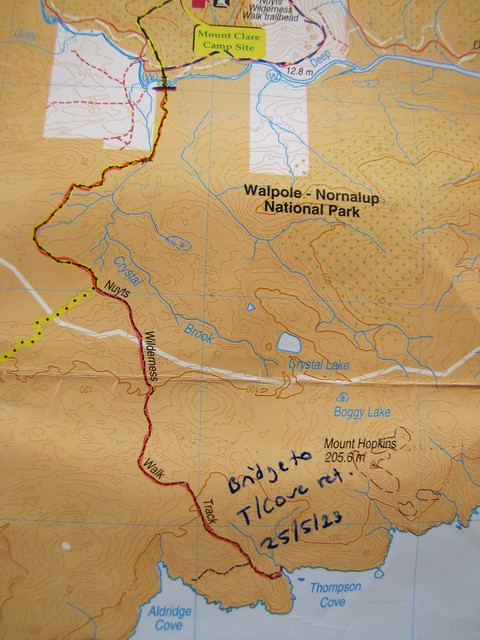
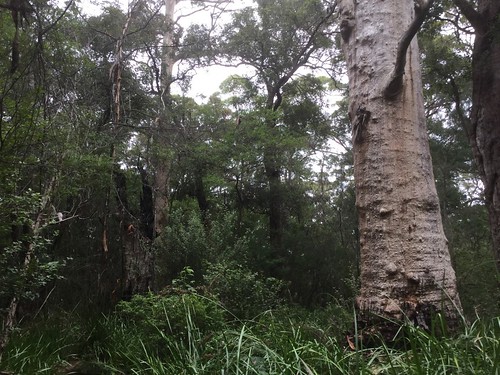

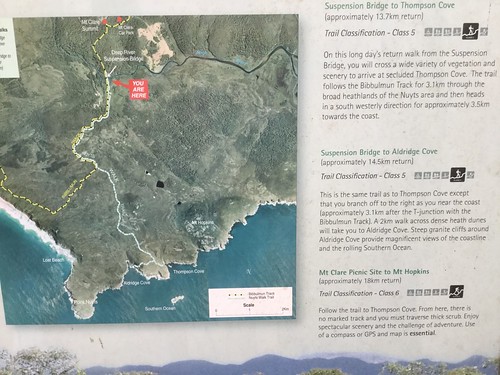




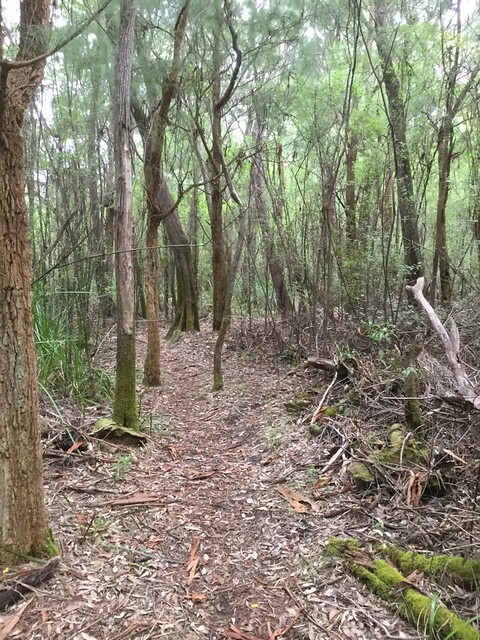
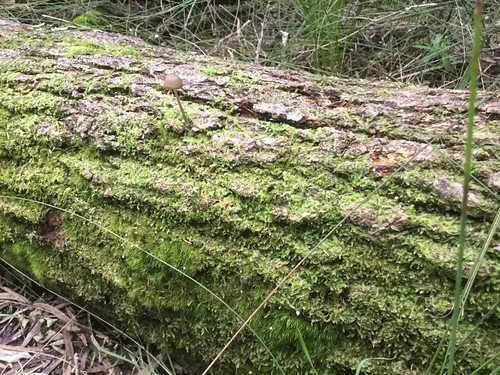

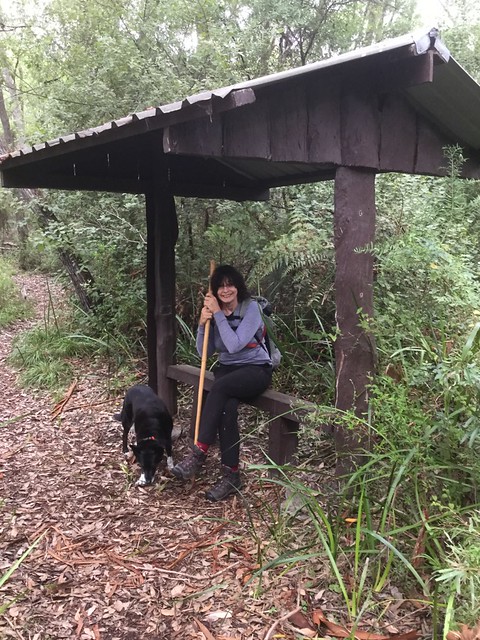
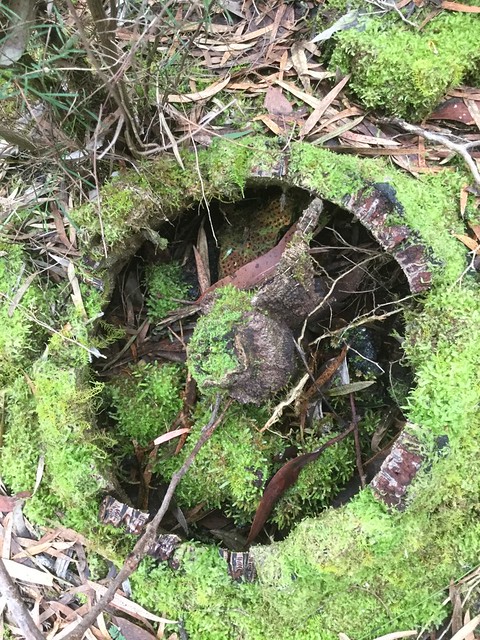
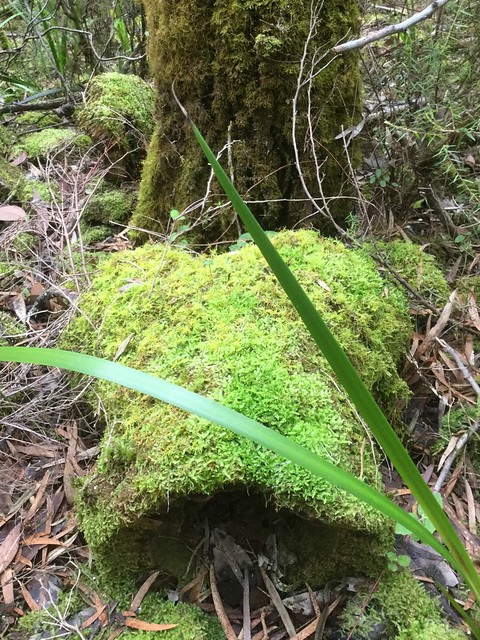
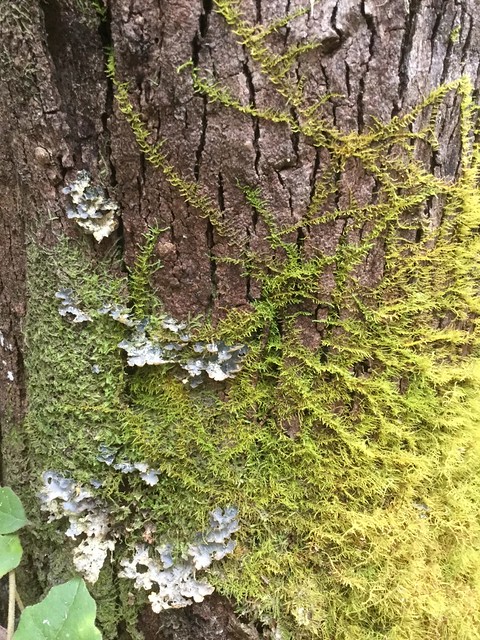


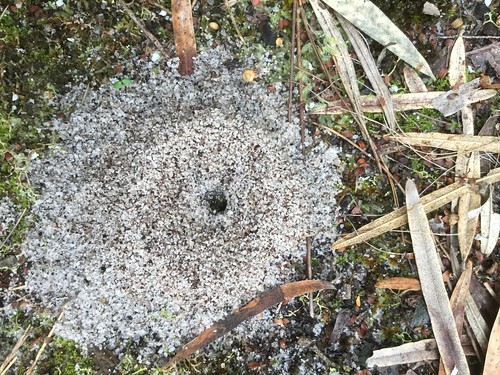
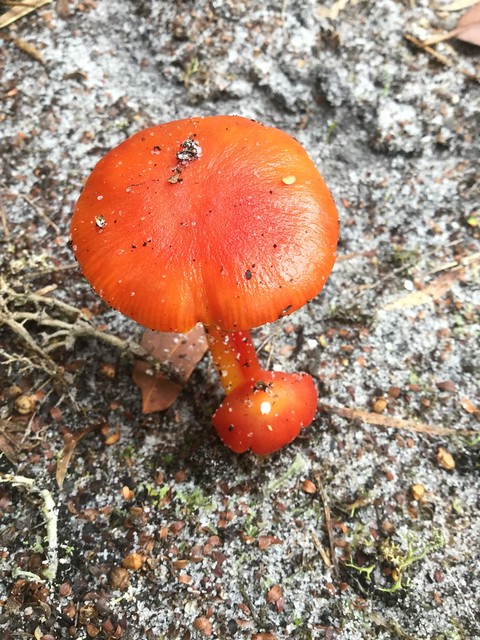
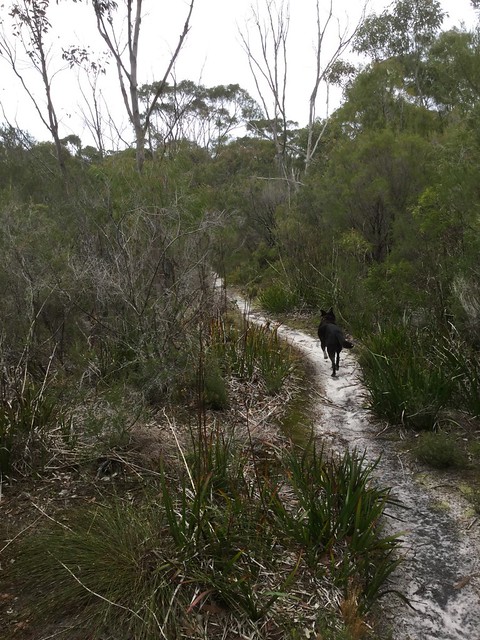





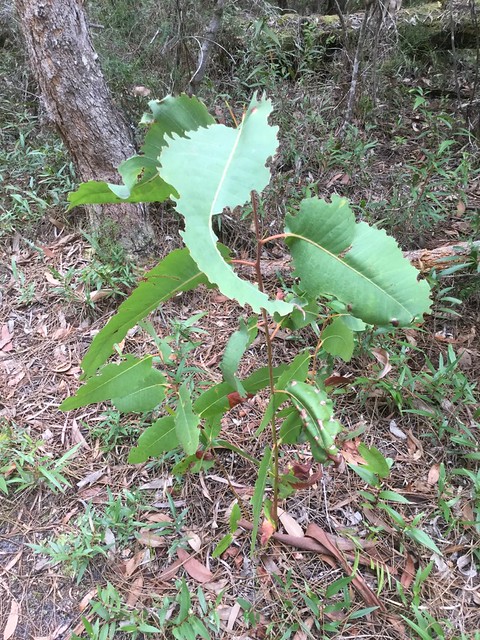
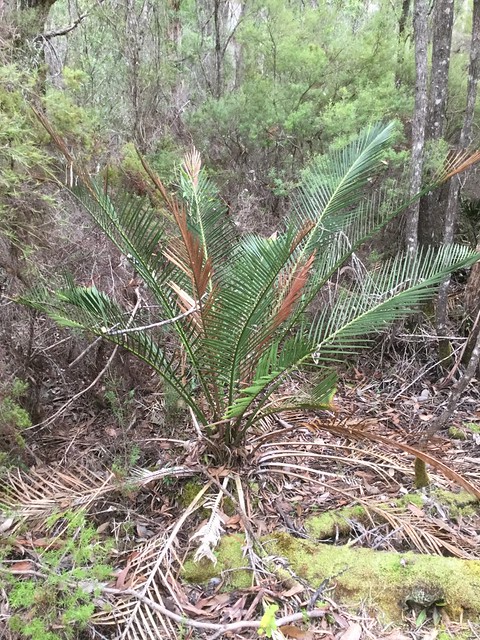
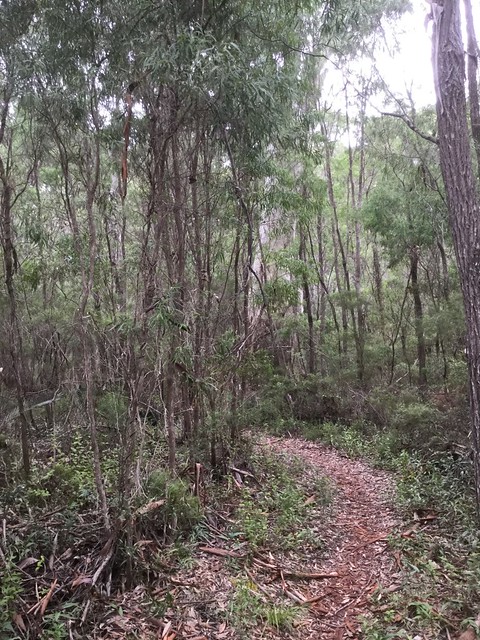
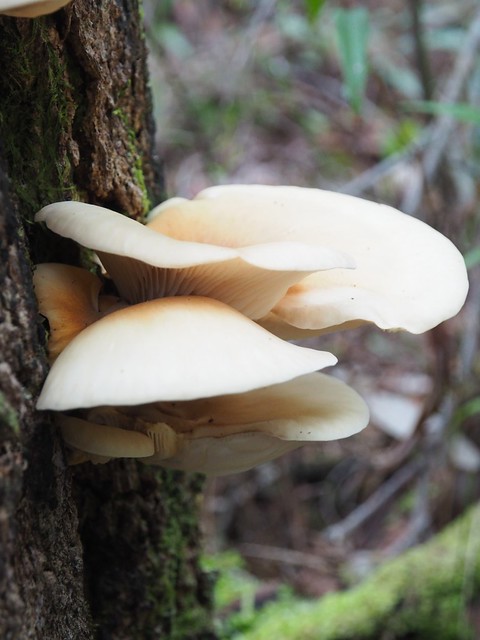

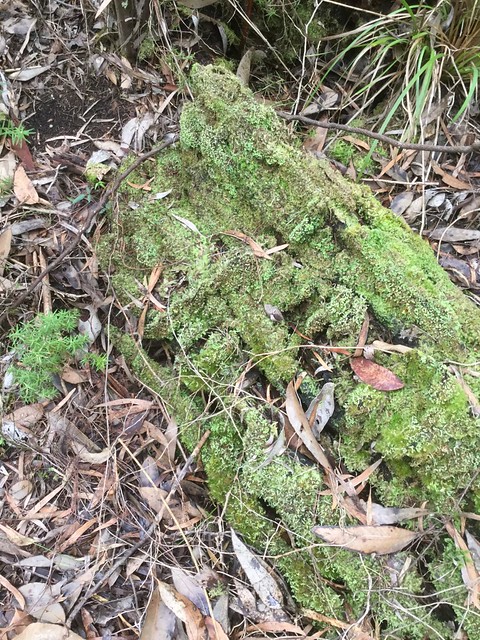

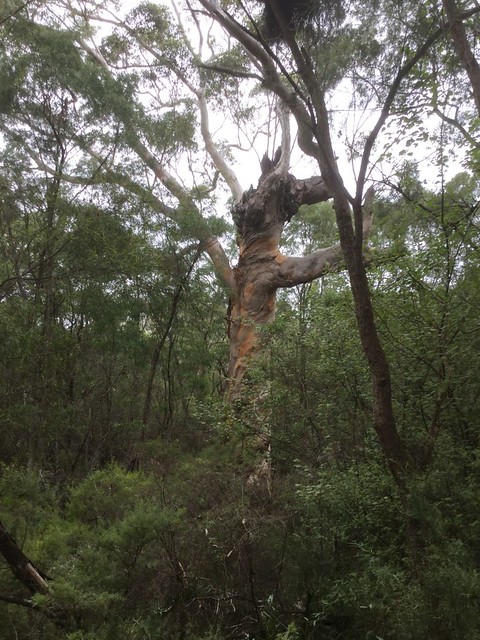
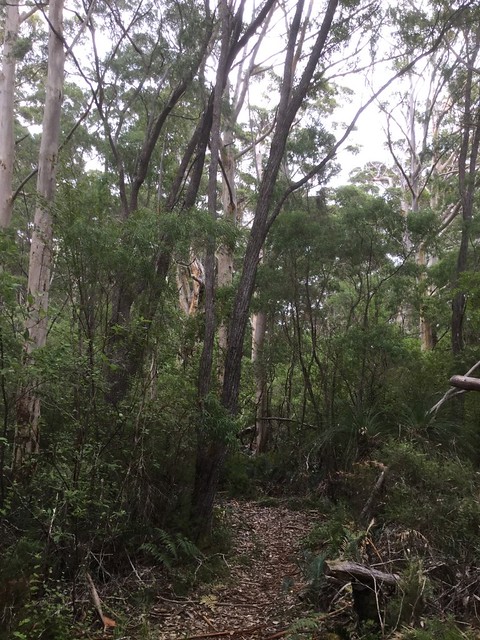

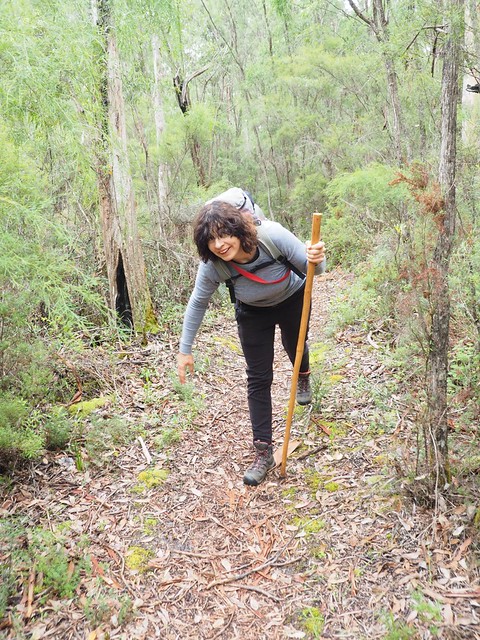
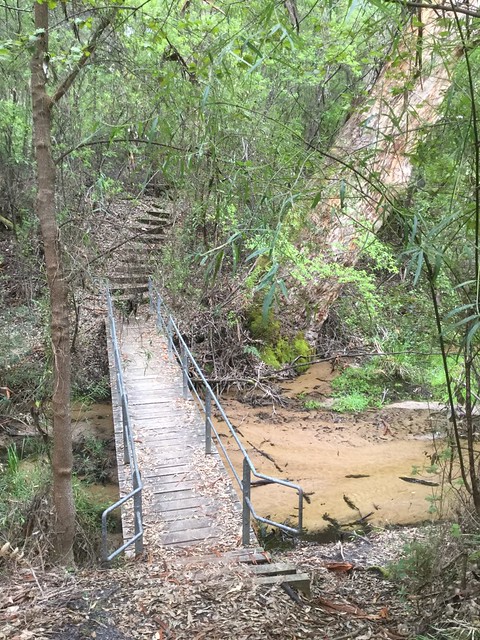



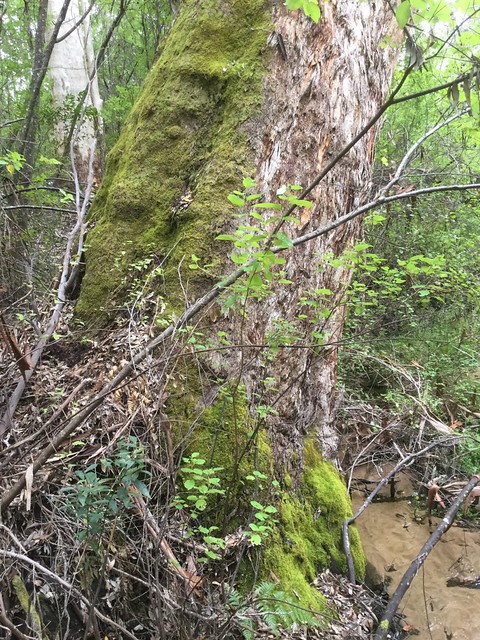

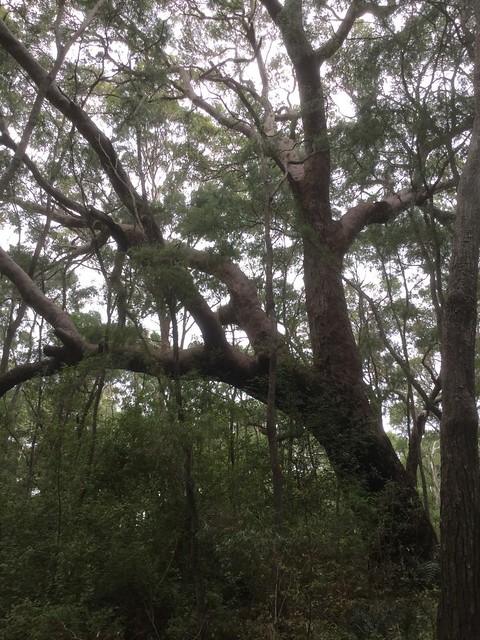
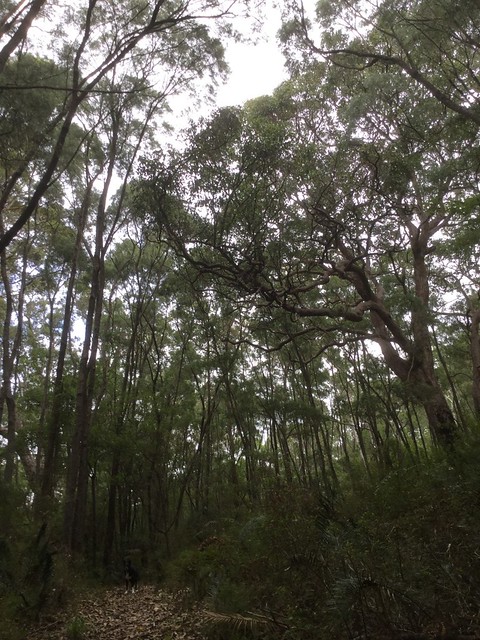



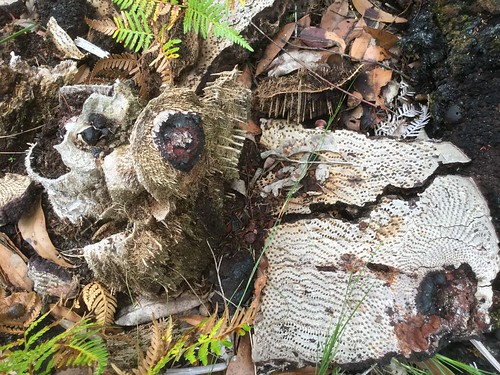
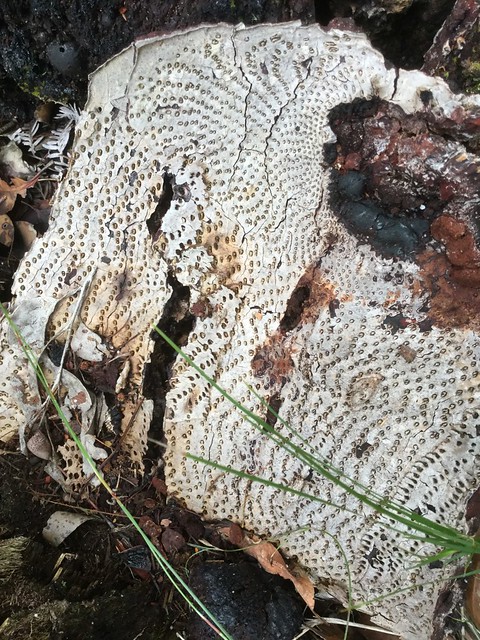

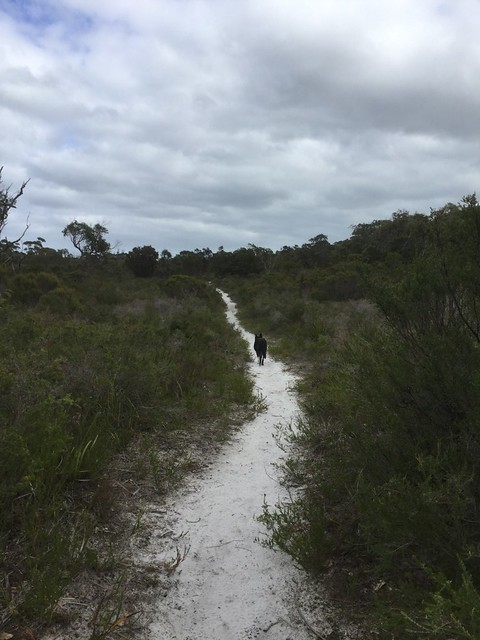

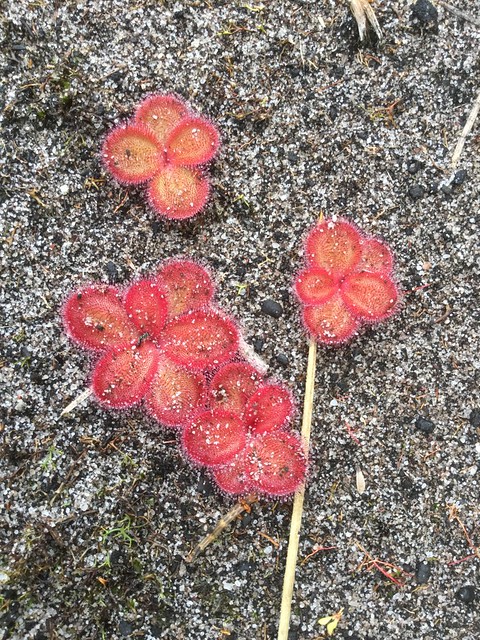


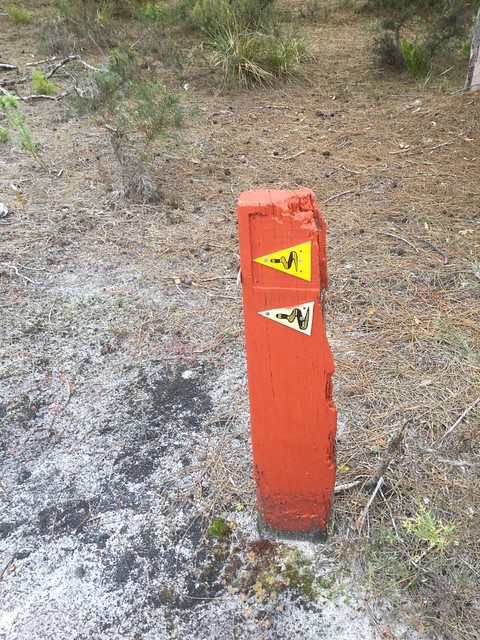
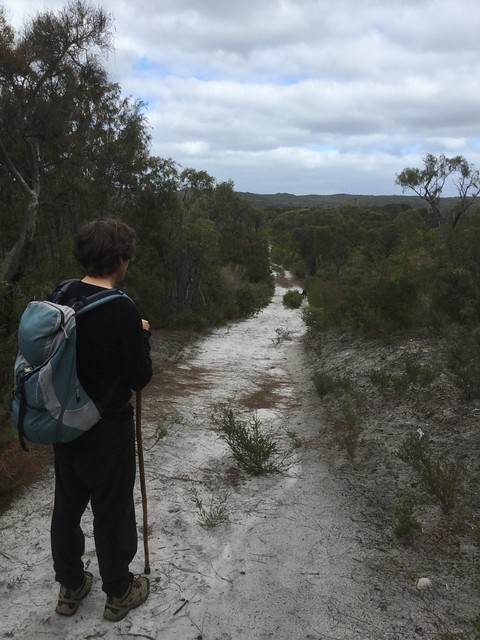
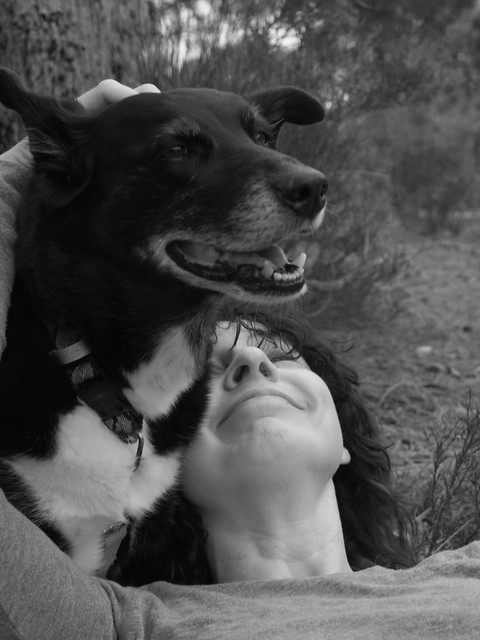

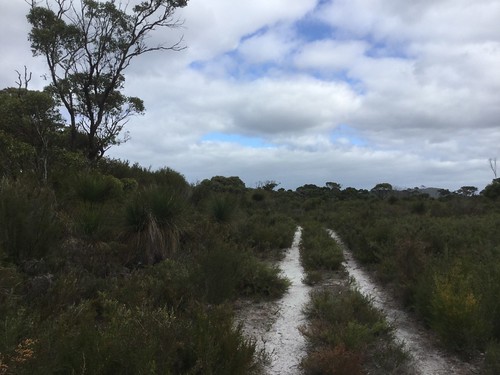


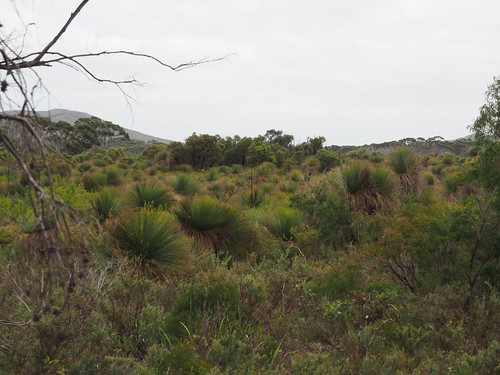

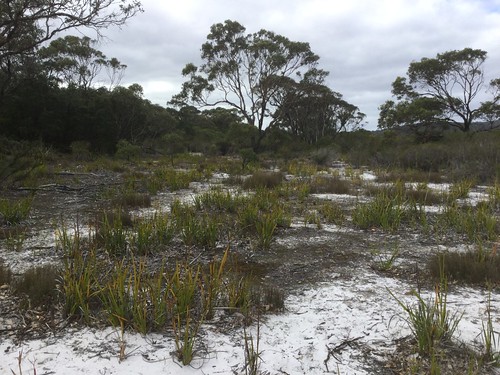

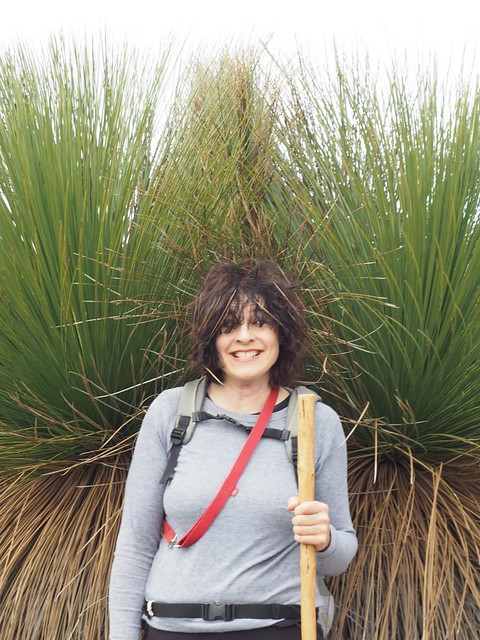

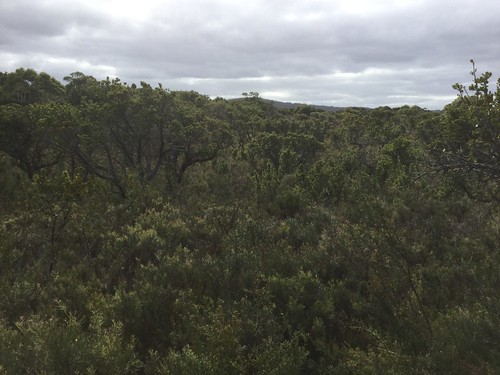
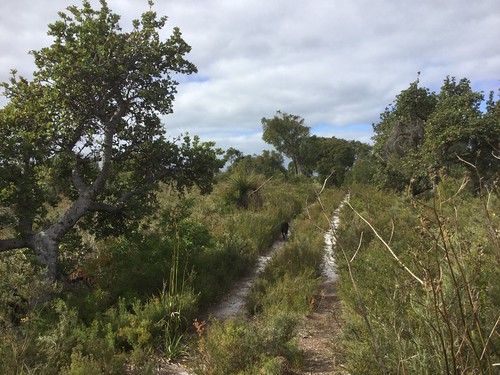
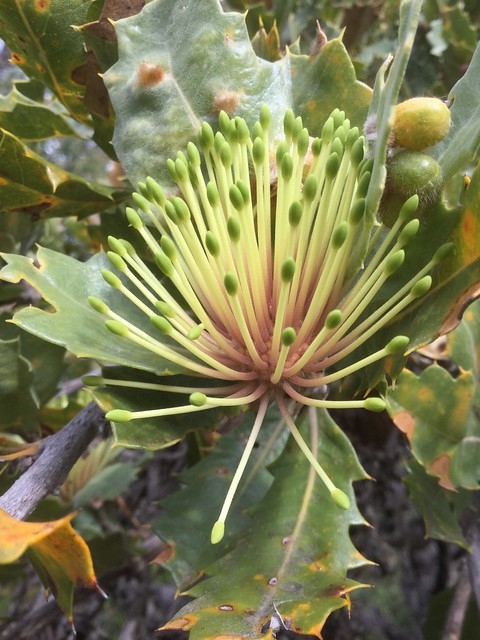
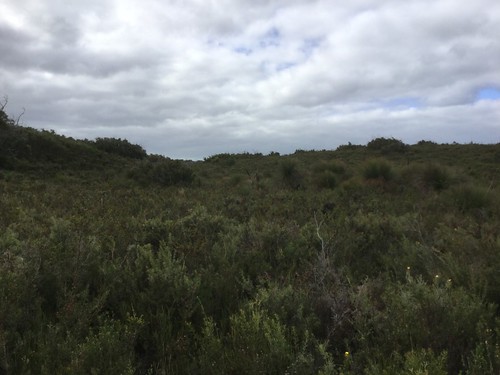



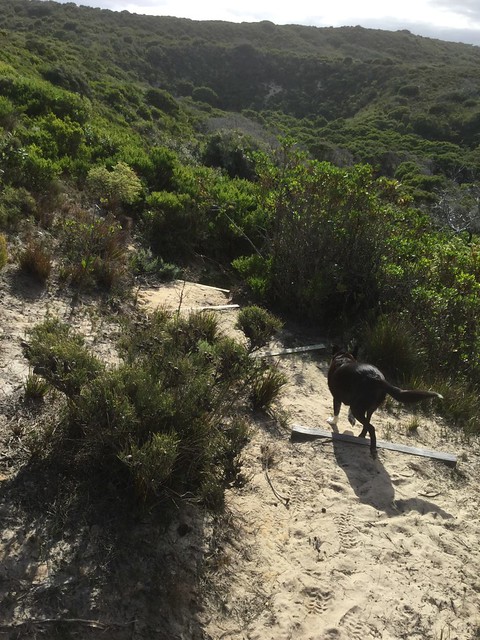


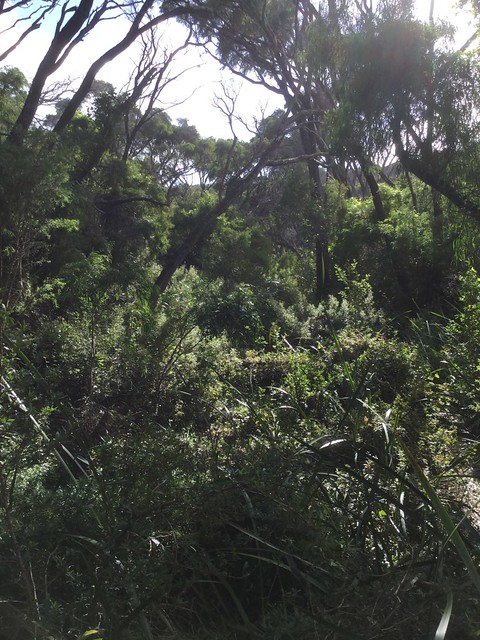
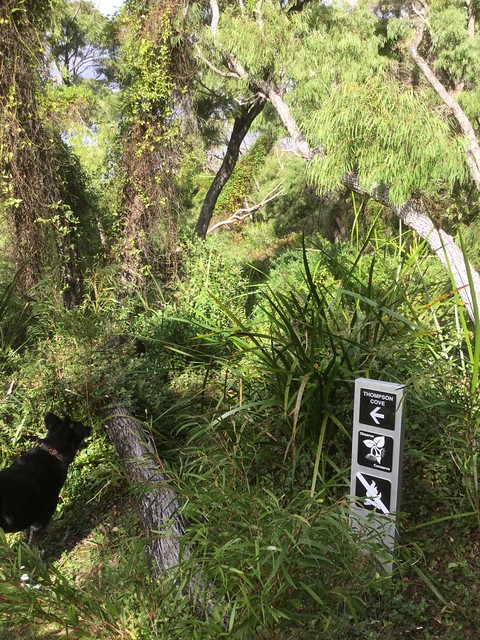
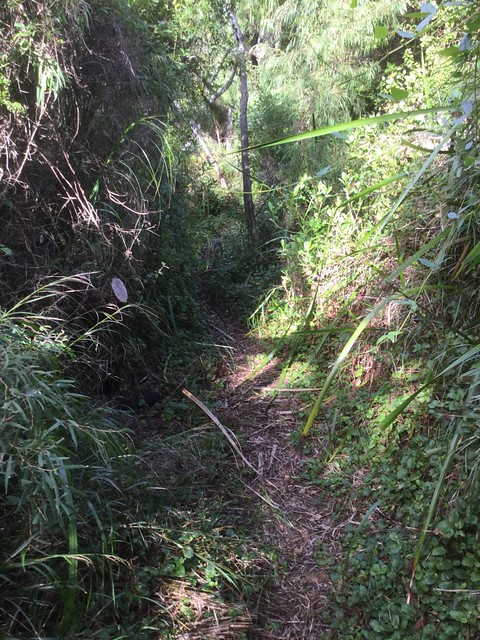
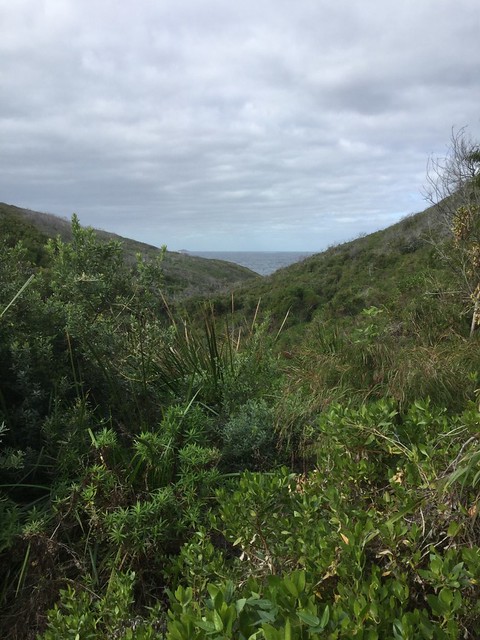

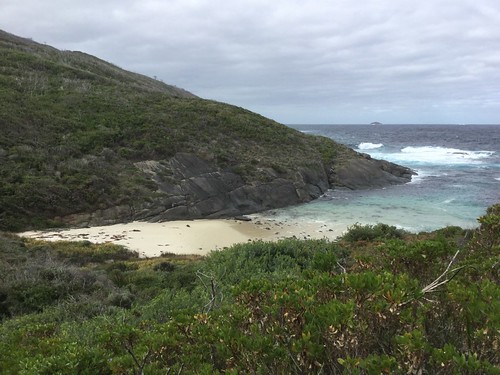
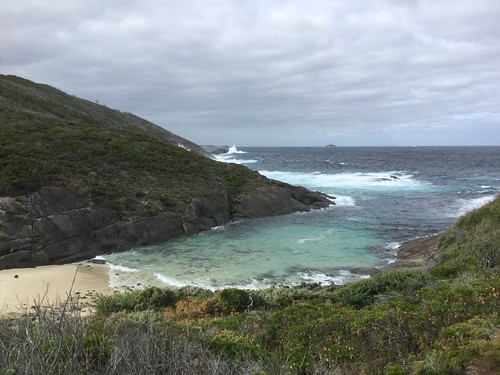
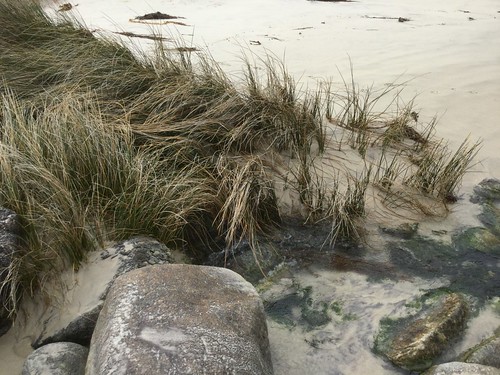
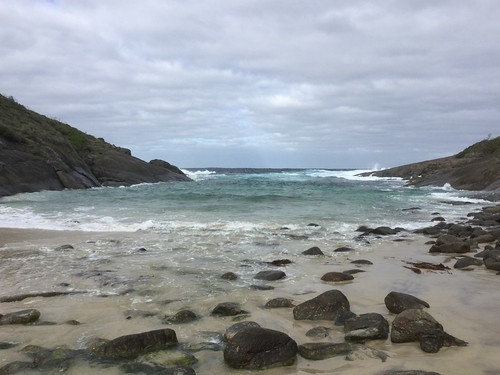

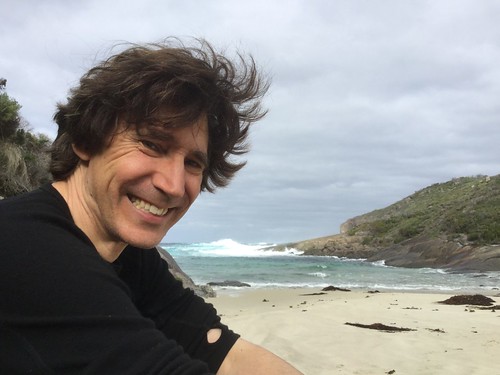

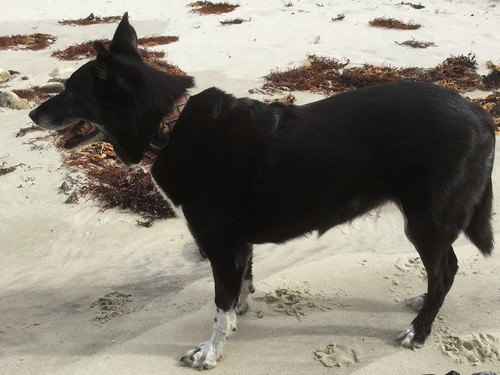




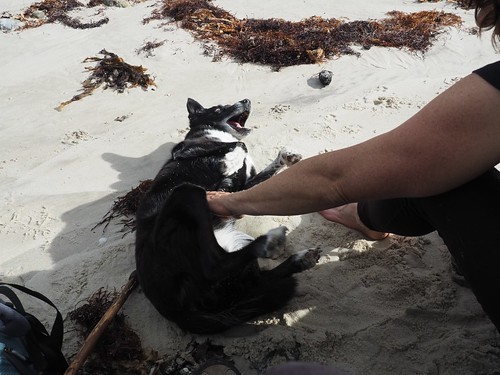
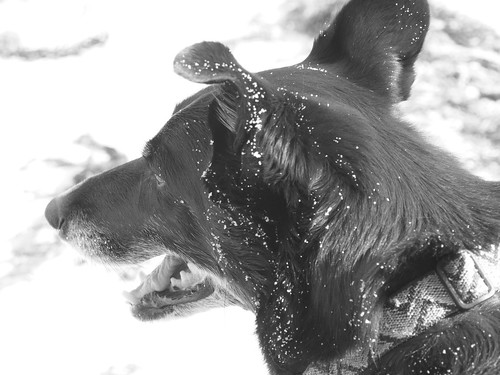

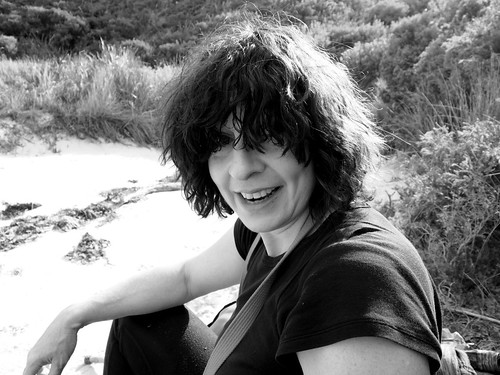
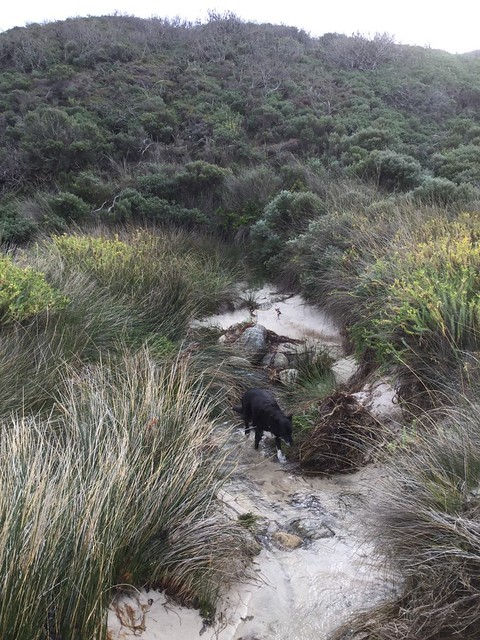
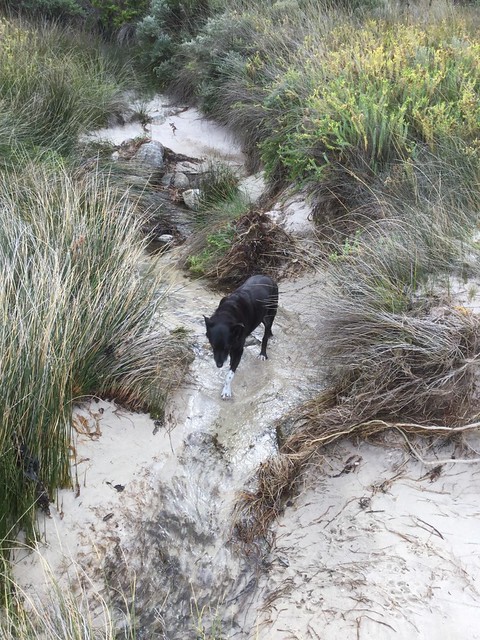
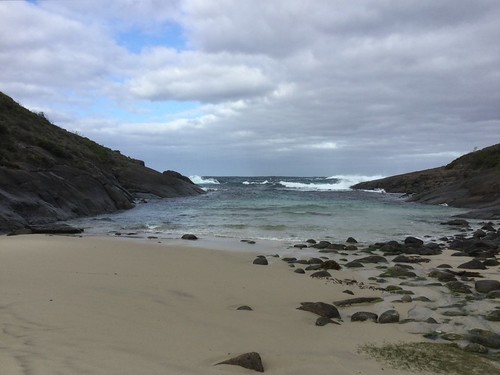
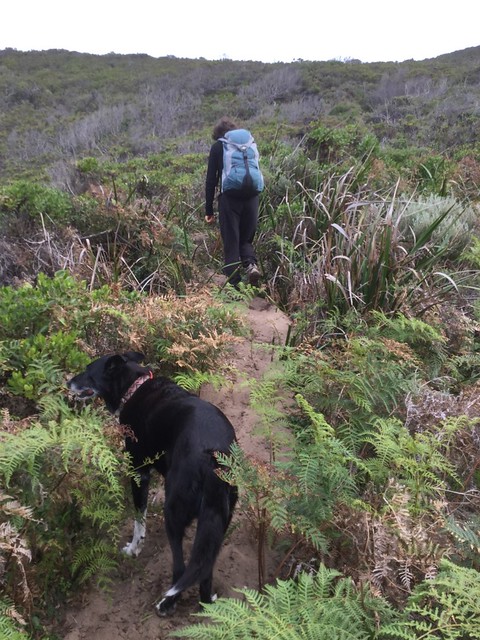


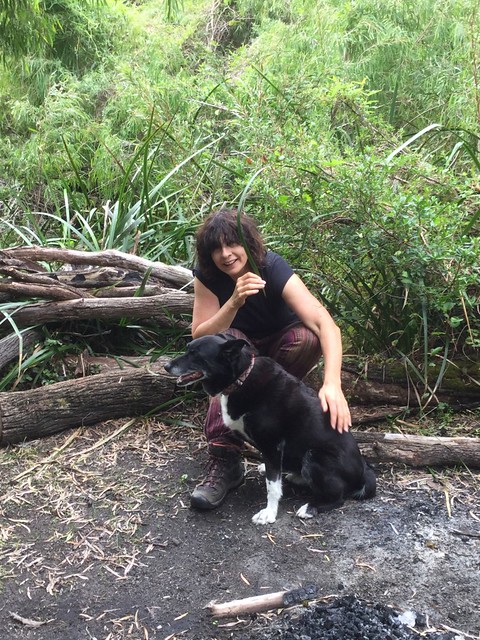
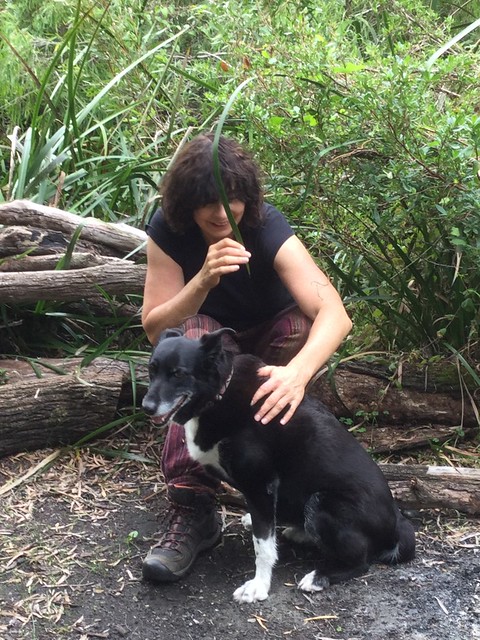
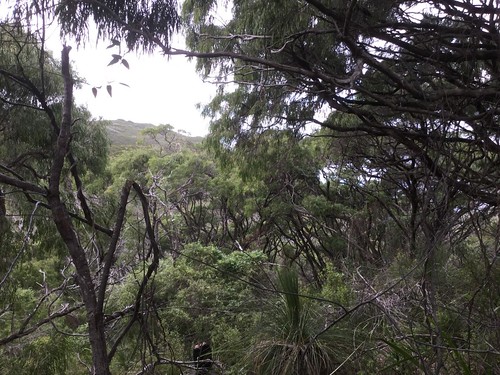


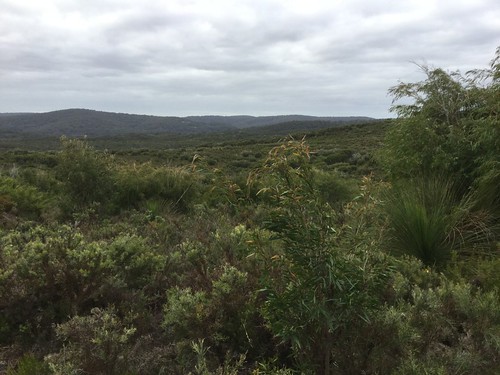
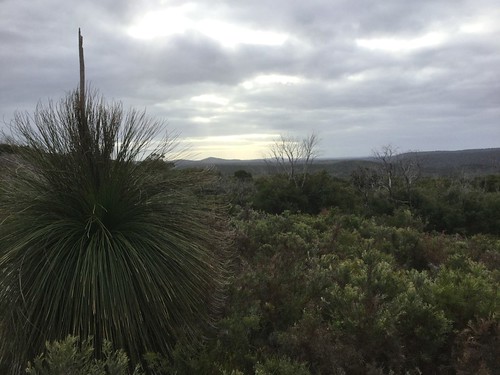
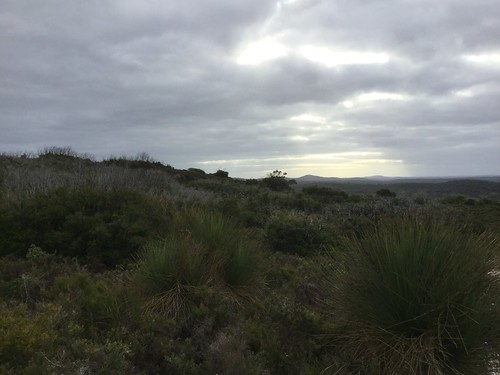
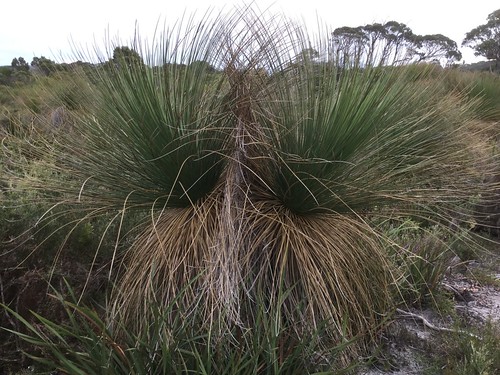
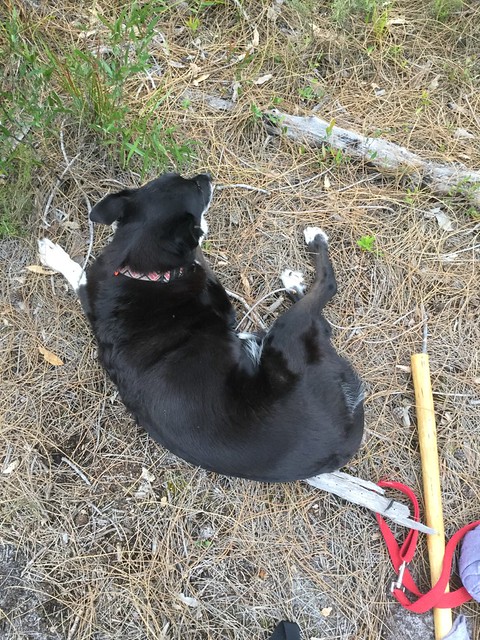






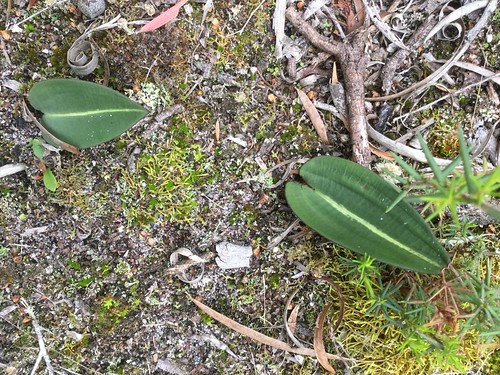

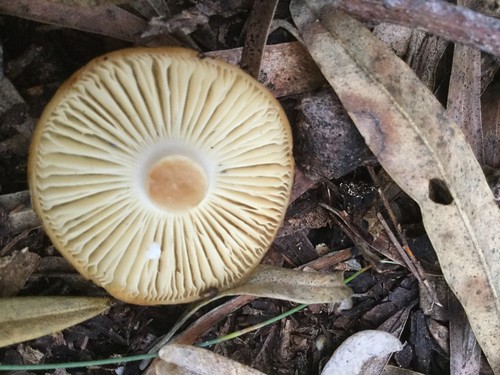
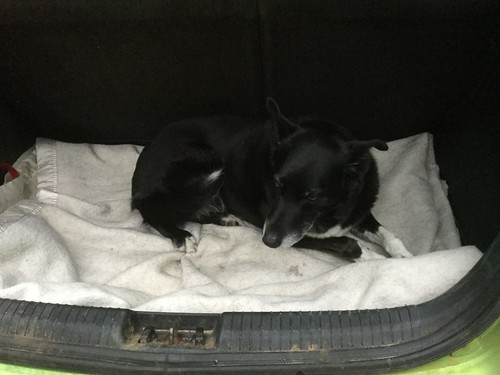
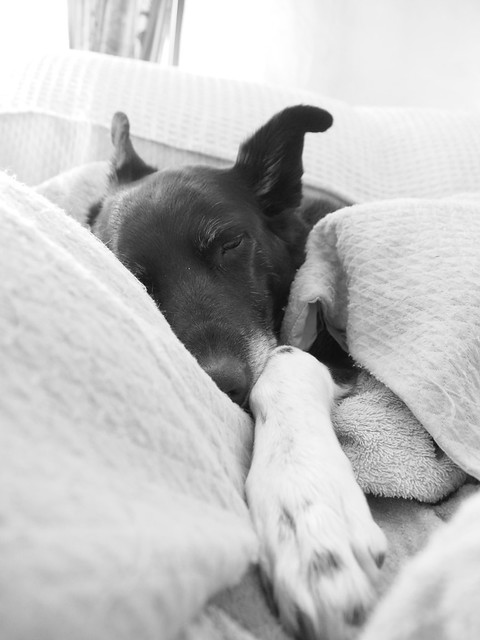
Very cool ecosystems. It’s interesting—both the similarities and differences between those in Australia and those in North America. The carnivorous plants seems to be very unique to Australia.
You don’t have any? Maybe your soils are too good! 🙂
Just beautiful ecosystems, and heartbreaking when you look at a map and see how little is left after <250 years of destruction. 🙁
Intriguing finding you, Lyle Lewis, at the end of this wonderful, vicarious little trip I took via Sue Coulstock this morning.
I guess my intrigue is about the vast, unresponsive, vacuous anonymity characteristic of my experiences on social media (something Sue, in a different essay, contrasted with childhood experiences of pen-pal or letter-writing-friend connections. Yet here is someone I don’t know whose book I’ve read.
We humans are very odd creatures.
Thanks, Sue. And Lyle.
Hello Chuck!
I’ve always liked to subvert quite impersonal places by making them more personal with the help of kindred spirits, who were far easier to find on Twitter after zealous daily application of the block button to anyone who was behaving in an unsavoury manner, which really cleaned up my feed. Love my little circle there. Life is too short to not live – to just exist – or to not relate. I grew up in a family which did not relate and it’s possible to grow up with parents convinced they know you who have no idea who you actually are because they’ve never asked, or encouraged you to express your thoughts (unless they were “approved”/in line with their own). Growing up like that is terribly cold and sad you kind of become allergic to that kind of cold and sad, and in my case, determined not to be blighted further by those kinds of non-relating interactions.
We are indeed odd creatures. Non-human animals don’t do persistent non-relating in their social groups, which is one reason I’ve always enjoyed their company.
Thank you too, Chuck.